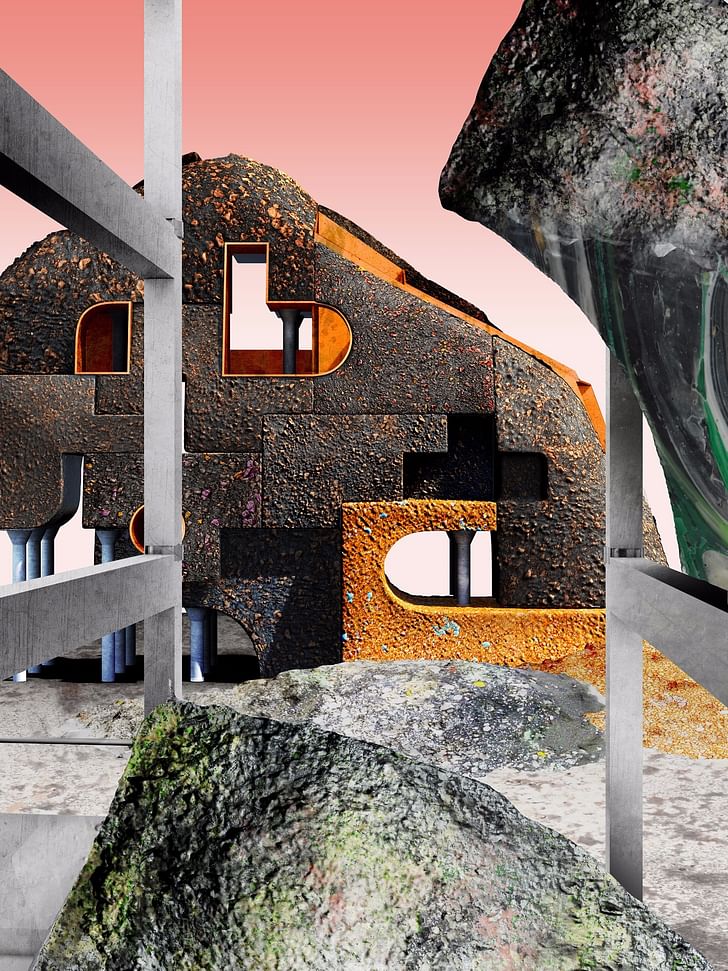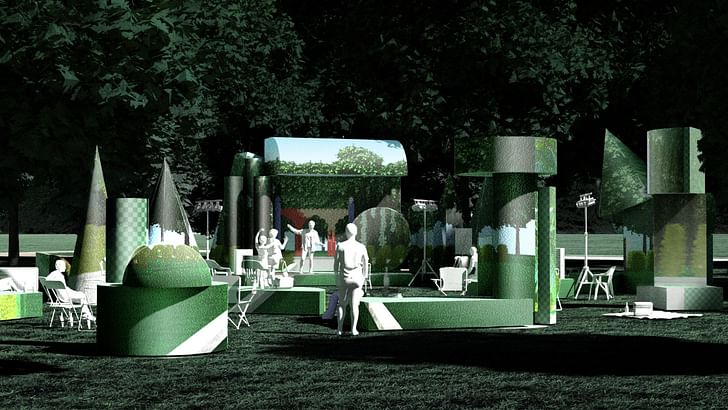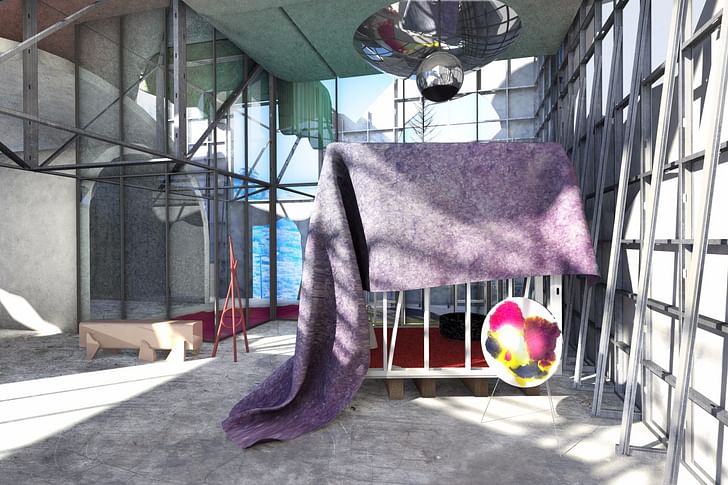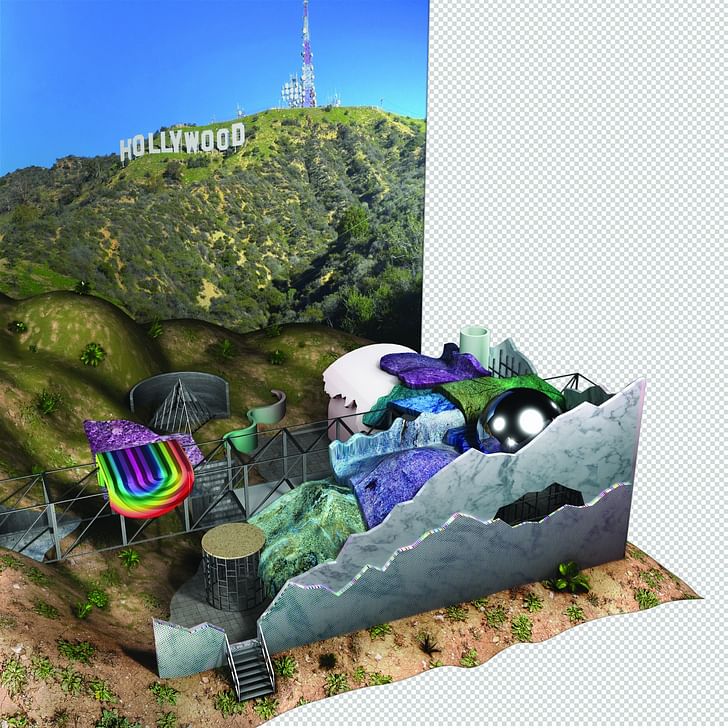

T+E+A+M is comprised of four professors based out of the Taubman College of Architecture and Urban Planning in Ann Arbor. All holding principal positions within the small practice, this structure is quite unusual for a firm of their size. As they currently complete their residency at the Ragdale Foundation, we catch up with the quartet to discuss how they manage creative production with so many principals.
How many people are in your practice?
There are four principals and we currently have five interns. The office expands in the summer, but we typically contract again in the fall when the school year starts.
Why were you originally motivated to start your own practice?
T+E+A+M is a relatively young practice. We’ve been friends and colleagues for a long time, doing work individually and with other collaborators. A couple of years ago we noticed our interests starting to overlap in a meaningful way and we started to talk seriously about collaboration.
We intuitively knew the design was better than anything we could have done individually, and that we were on to something.
When the call for Expressions of Interest came out for the 2016 U.S. Pavilion at the Venice Biennale it seemed like the perfect chance to join forces. Once we were selected, we spent the next six months in a whirlwind of design and production. During that time, our respective sensibilities, skills, and values merged in an organic and productive way. At the end of that project we intuitively knew the design was better than anything we could have done individually, and that we were on to something. We haven’t really looked back since.

What hurdles have you come across?
We all had solo practices that we started while also teaching full-time, which is a common model for young American architects. Our biggest hurdle currently is figuring out how to transition to the next phase of our work. Prior to forming T+E+A+M, we all had solo practices that we started while also teaching full-time, which is a common model for young American architects. Universities like ours are fantastic for supporting small projects like exhibitions, objects, and prototypes, which are fun to do, but don’t necessarily lead to buildings. Creating a practice that builds buildings takes a different type of foresight and effort. We’re trying to look further into the future and lay the groundwork for the kinds of projects we hope to be doing in the months and years ahead.
Is scaling up a goal or would you like to maintain the size of your practice?
We definitely want to take on projects of larger scope in the future. We don’t have ambitions to be huge (teaching full-time naturally limits the size of our practice) but we do want to be big enough to manage multiple medium- to large-scale projects at a time.


Do you guys see yourselves maintaining your teaching positions in the future as T+E+A+M grows?
We see buildings as a medium for ideas to bear on the world outside academia. Absolutely. The practice is wholly collaborative, but we maintain individual profiles as educators and academics. Teaching allows us to work with students on ideas that are more individually motivated. For instance, Thom teaches a seminar about humor and architecture and Meredith teaches a course on “other environmentalisms.” Individual research interests like these are most deeply engaged in the academic setting, but they definitely influence T+E+A+M’s design work. As teachers, each of us values the kinds of conversations that can happen in academic settings. Our practice is a channel for continuing some of those conversations among the four of us, and we see buildings as a medium for ideas to bear on the world outside academia.

What are the benefits of having your own practice? And staying small?
The academic practice has its upside. It’s a luxury to be able to choose what projects to take on. Maintaining full-time teaching jobs allows us to approach our practice from a different standpoint than one that is trying to be profitable out of the gate. We don’t lose money on projects, but we have the freedom to “break even” if we want, which permits us to make choices that a profit-driven model would not allow for.
This quantity means that in some ways we work for each other. We feel tremendous responsibility towards one another.
One thing that’s unique about T+E+A+M is that although we are small, we have four principals, which is a lot. This quantity means that in some ways we work for each other. We feel tremendous responsibility towards one another. We’ve also had to work out methods of communication and design that can work with such a large “principals committee.” Our design sessions can be quite long and intense and full of conversation, tangents, and debate. This has really enriched the work in a way that we could not have predicted.

With four principals, how do you guys go about divvying up the workload?
Unfortunately, we don't have a magic secret to share. It's alchemical, and it just works. We intentionally avoid specialization and try to keep the distribution of work fluid. Typically all four of us will be heavily involved in the design phases of any project, from early conceptions to design development. It’s when we’re moving into production/construction, whether for a competition or a built project, that tasks get divided up. If the project is large and complex, we’ll each lead a team that’s focused on certain components of the work. If it’s small we usually undertake those tasks ourselves. Day-to-day, we work quite fluidly and iteratively, passing work between us for critique, revision, and so on. People are very curious about our working process, and we often get questions about how we manage creative production with so many principals. Unfortunately, we don’t have a magic secret to share. It’s alchemical, and it just works.

No Comments
Block this user
Are you sure you want to block this user and hide all related comments throughout the site?
Archinect
This is your first comment on Archinect. Your comment will be visible once approved.